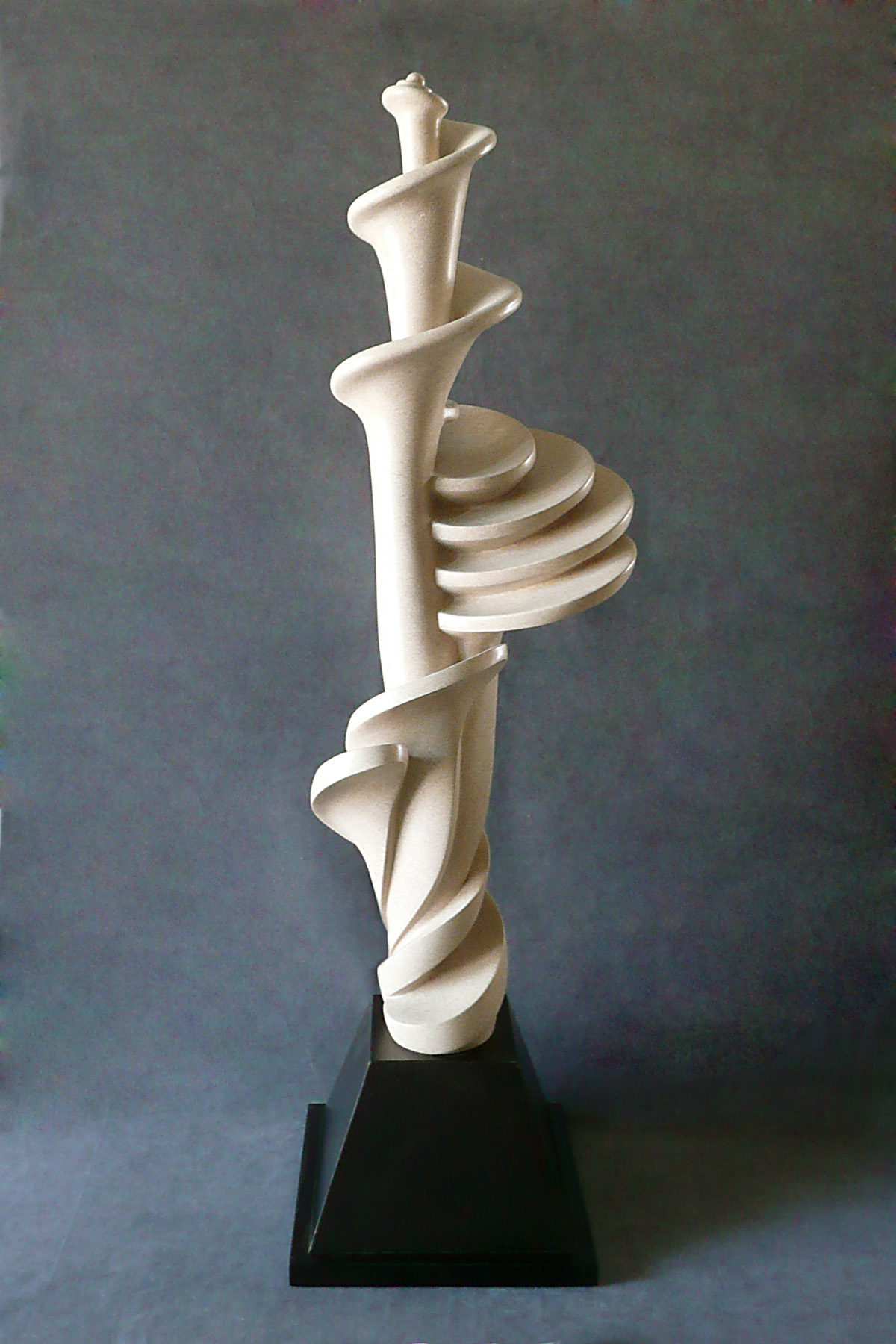
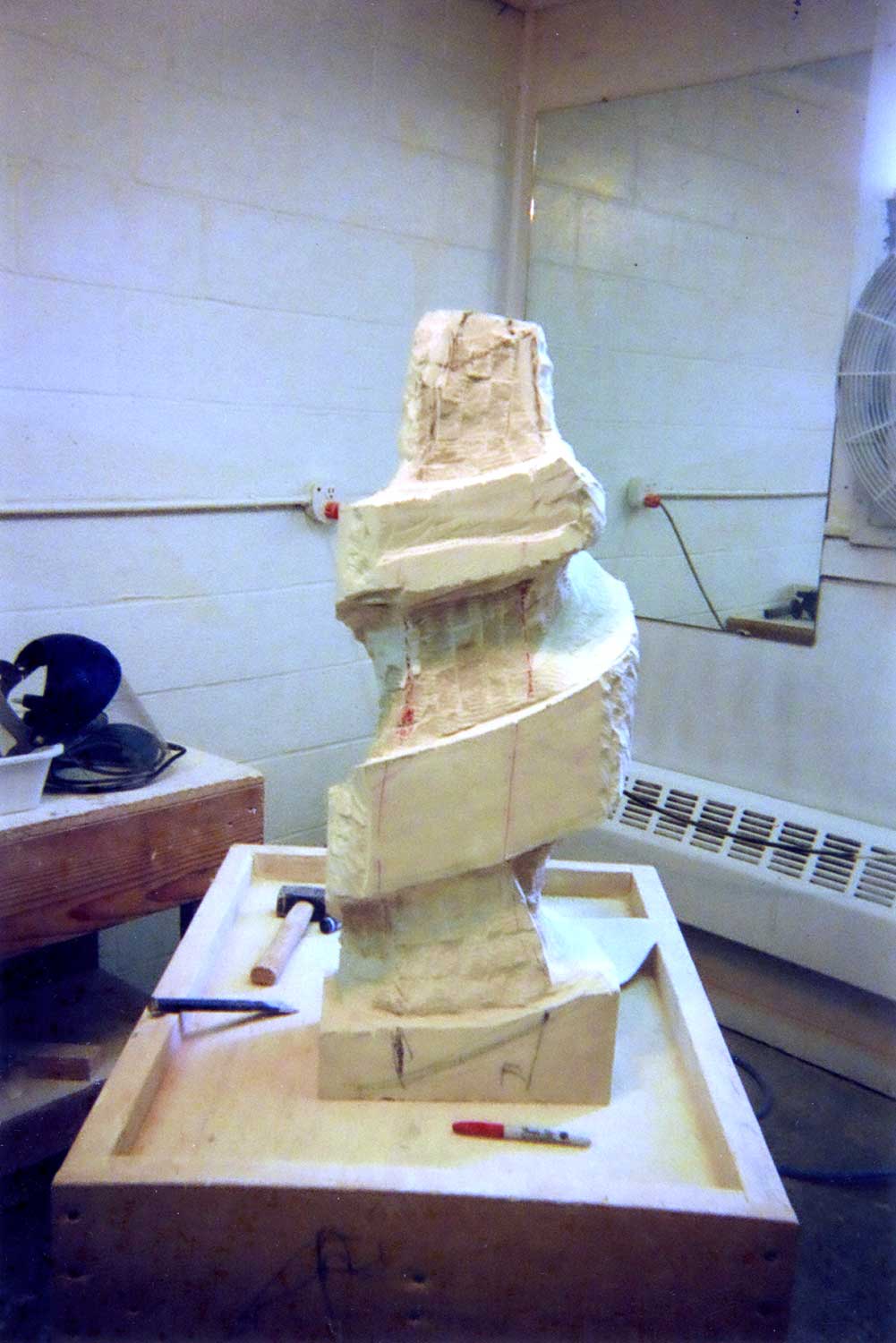

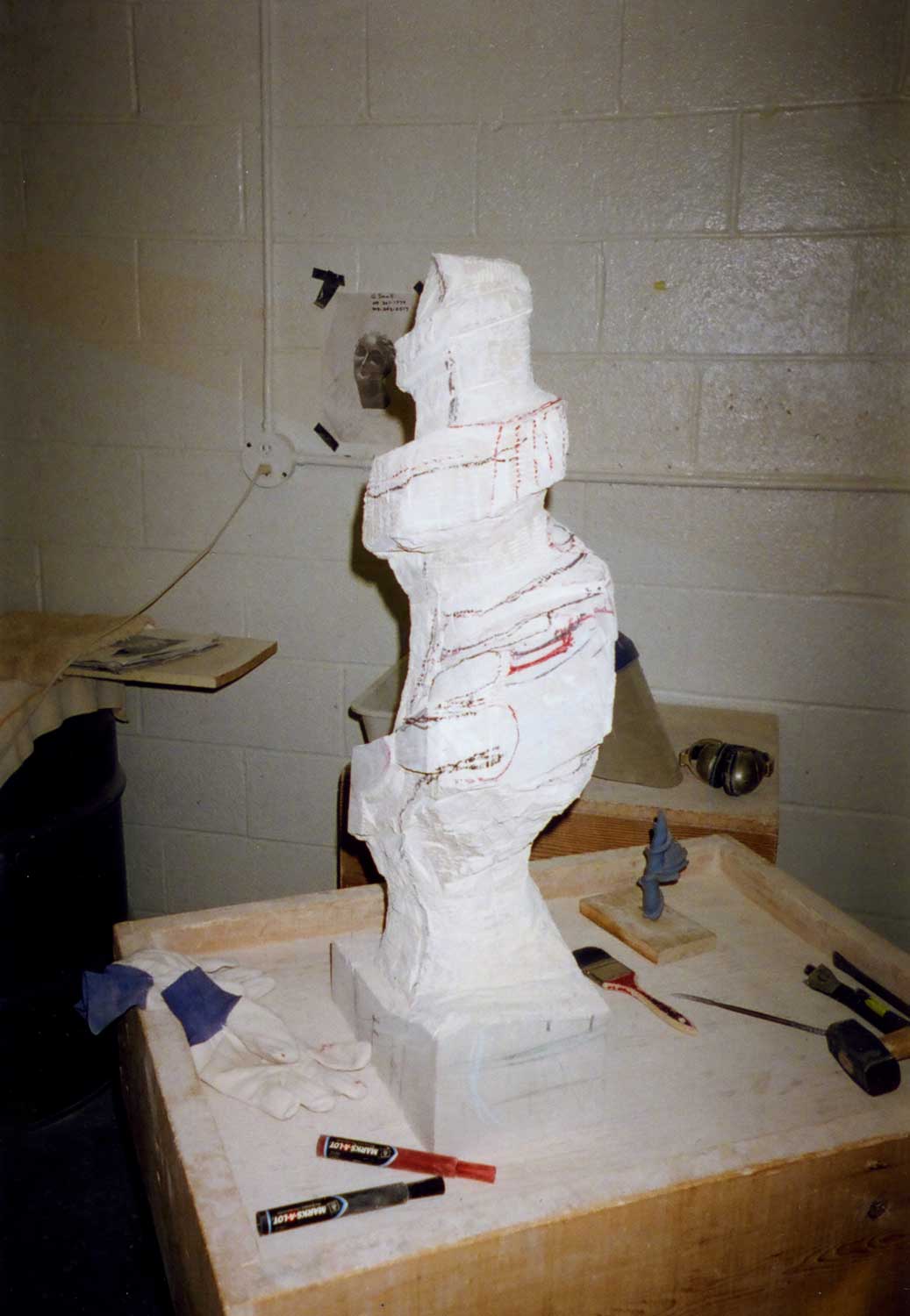
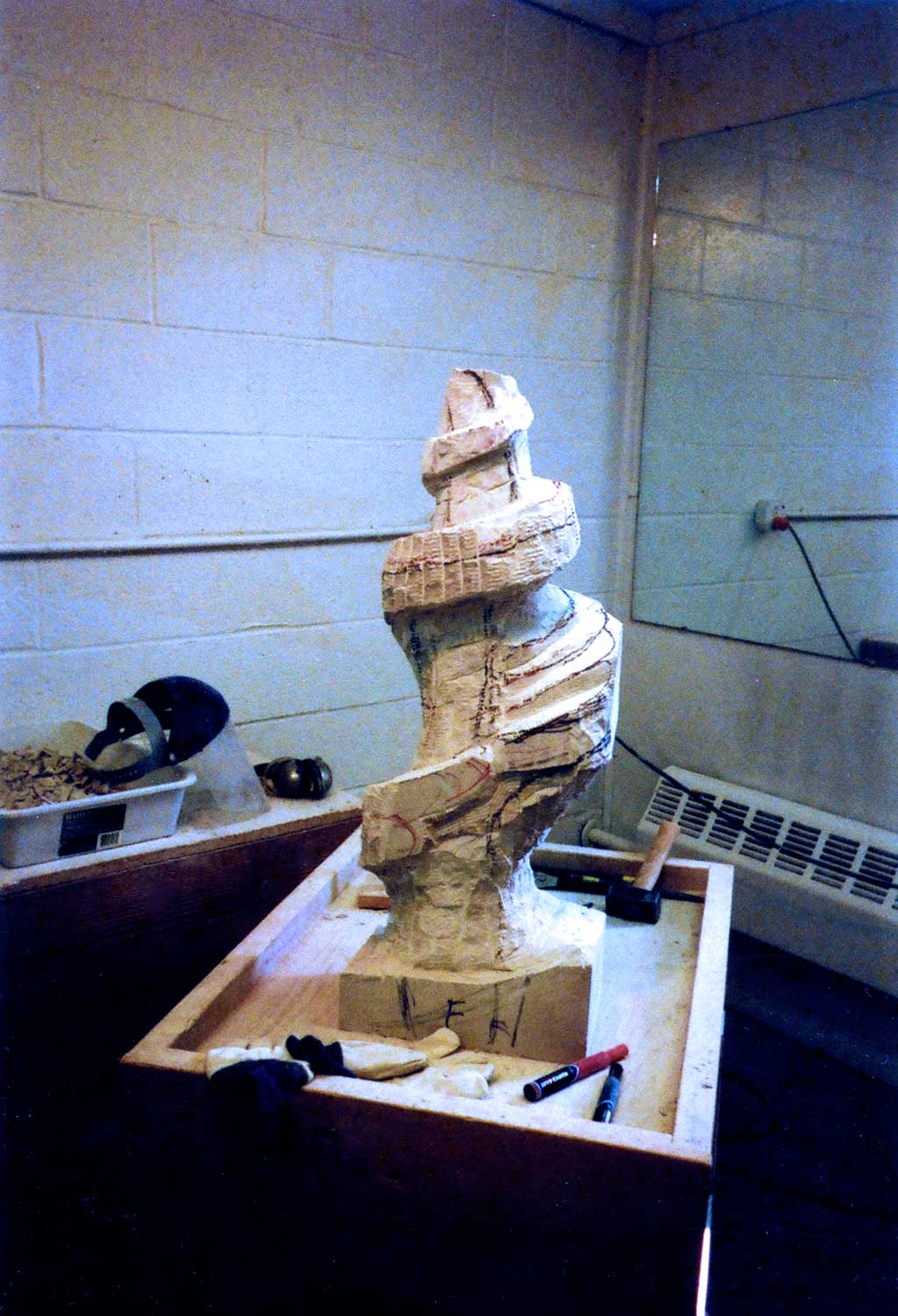
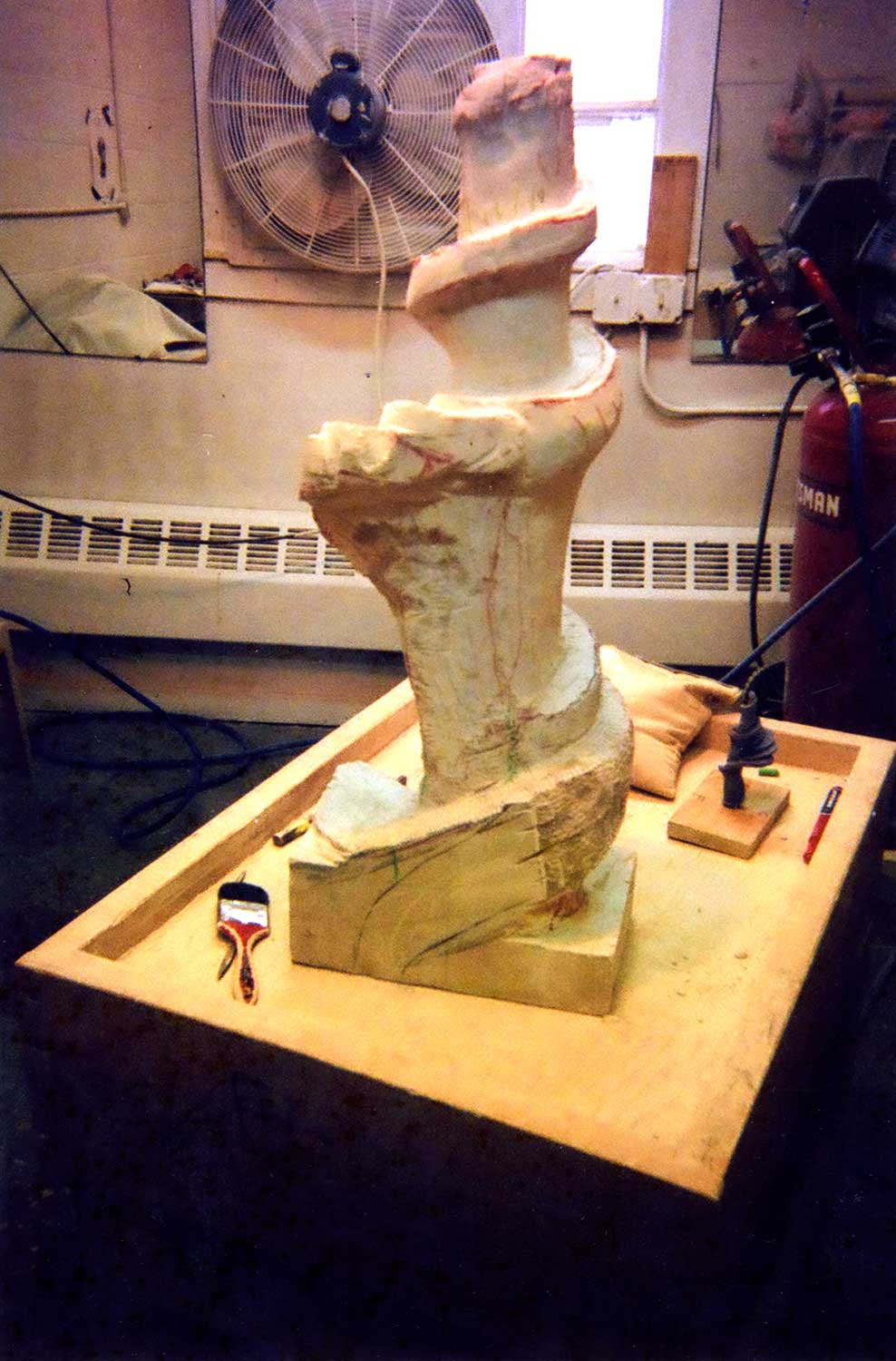
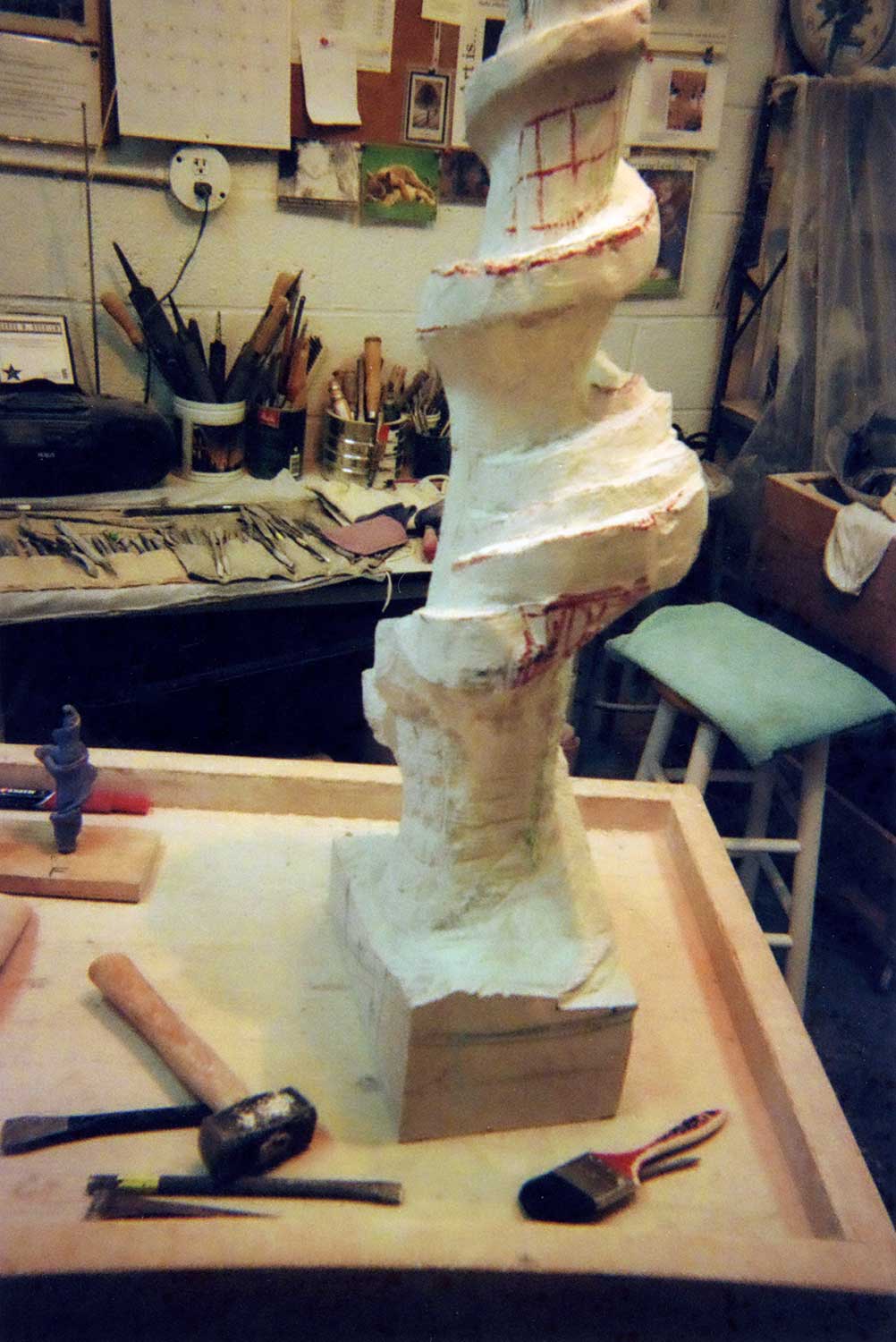
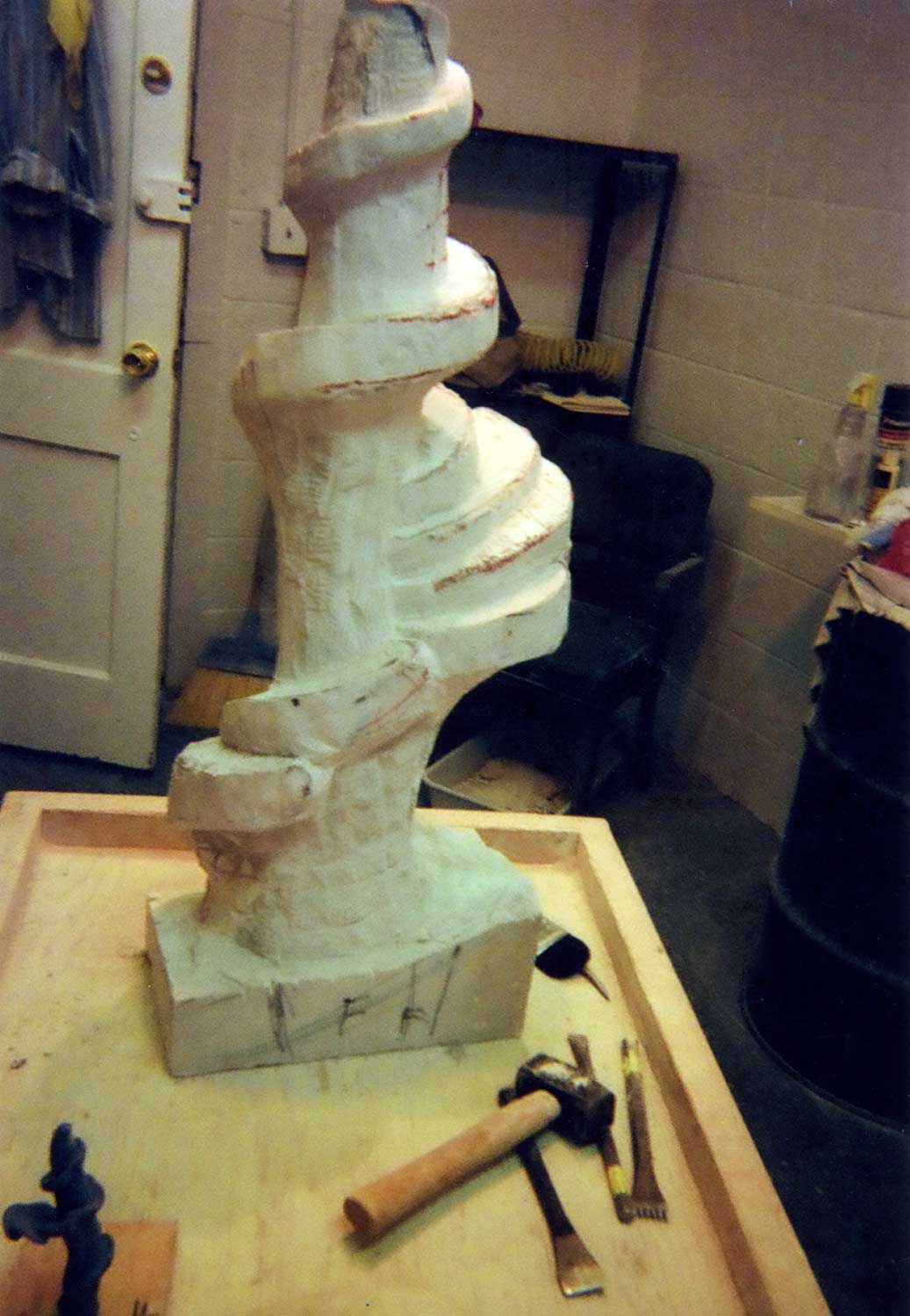
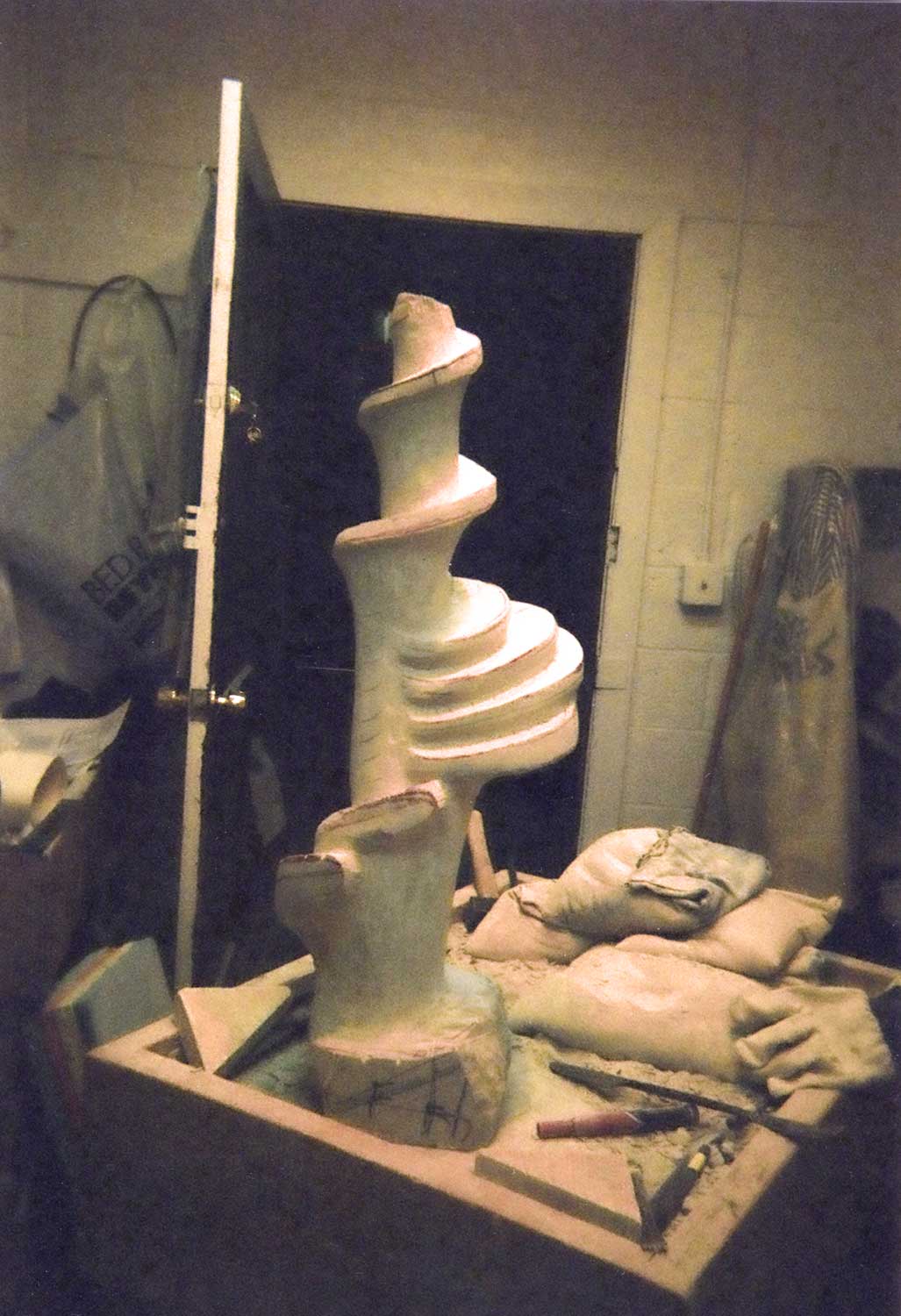
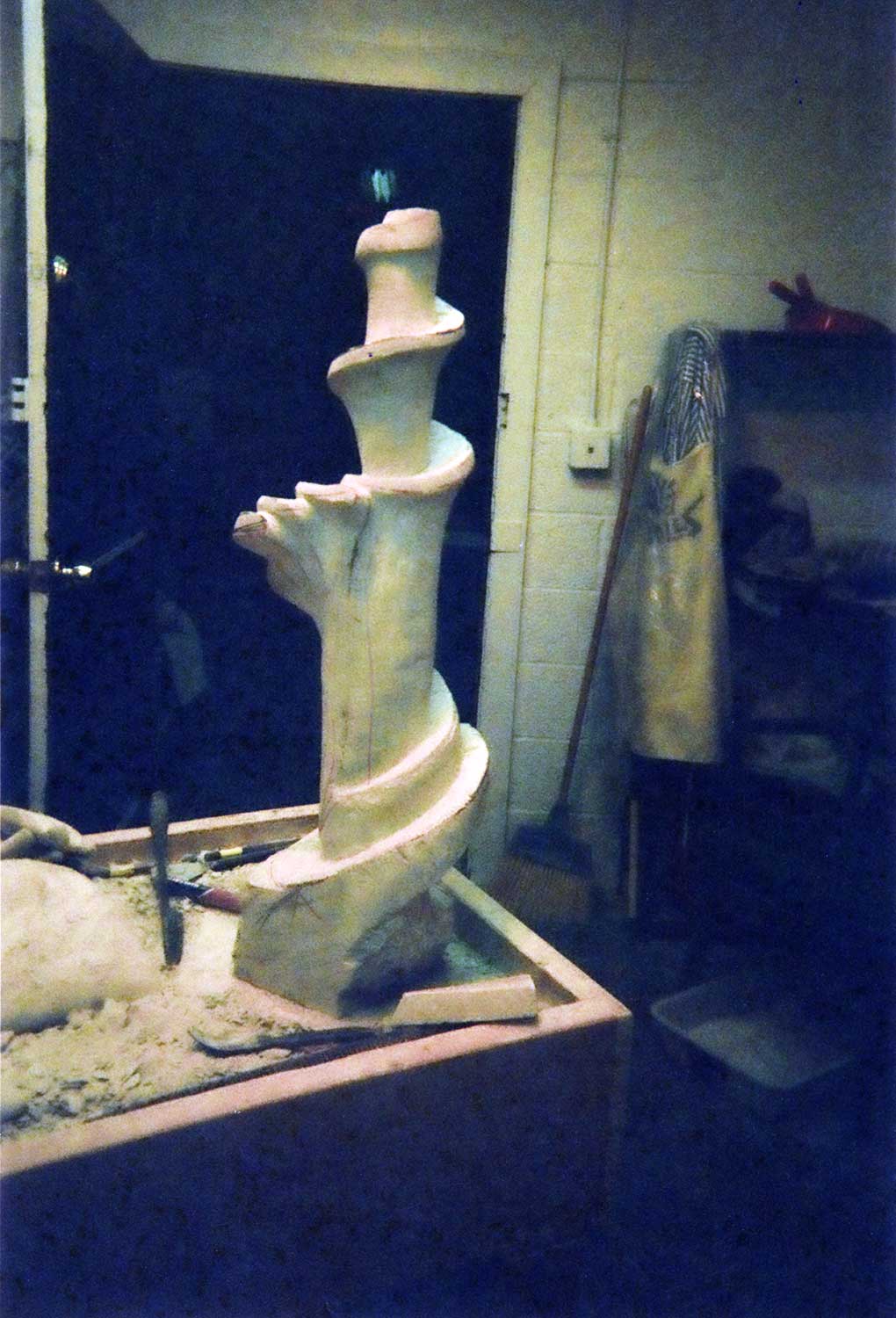
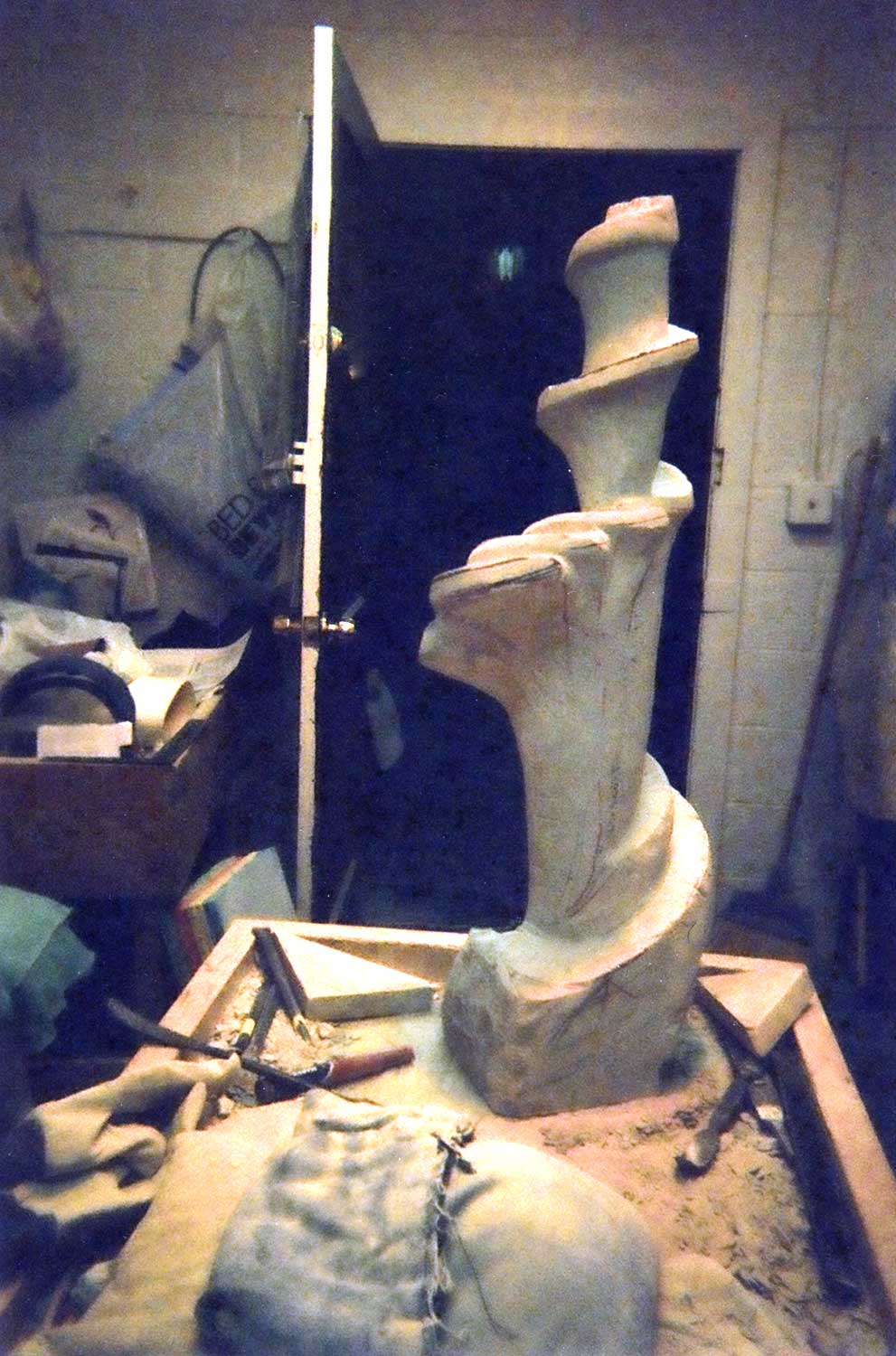
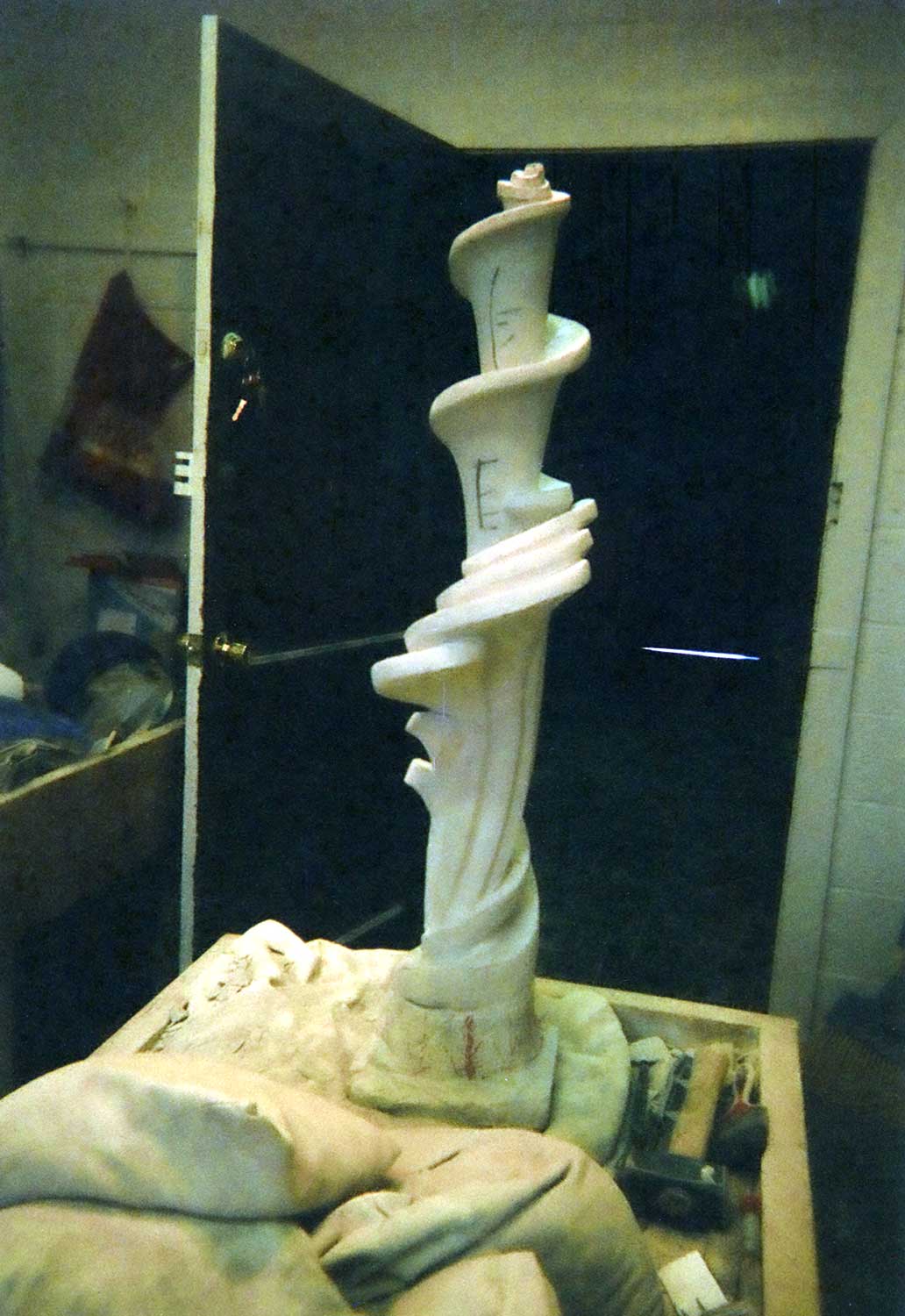
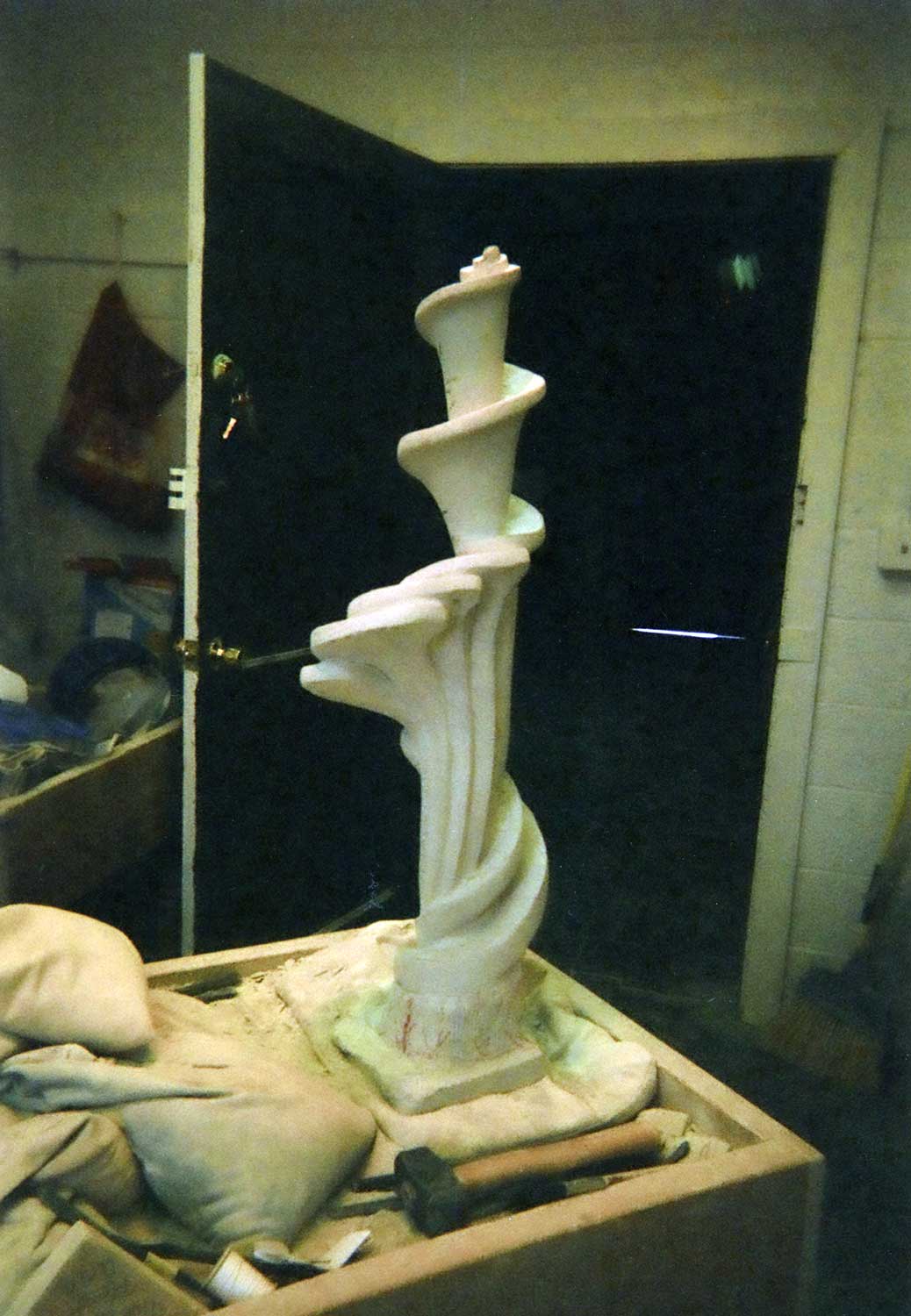
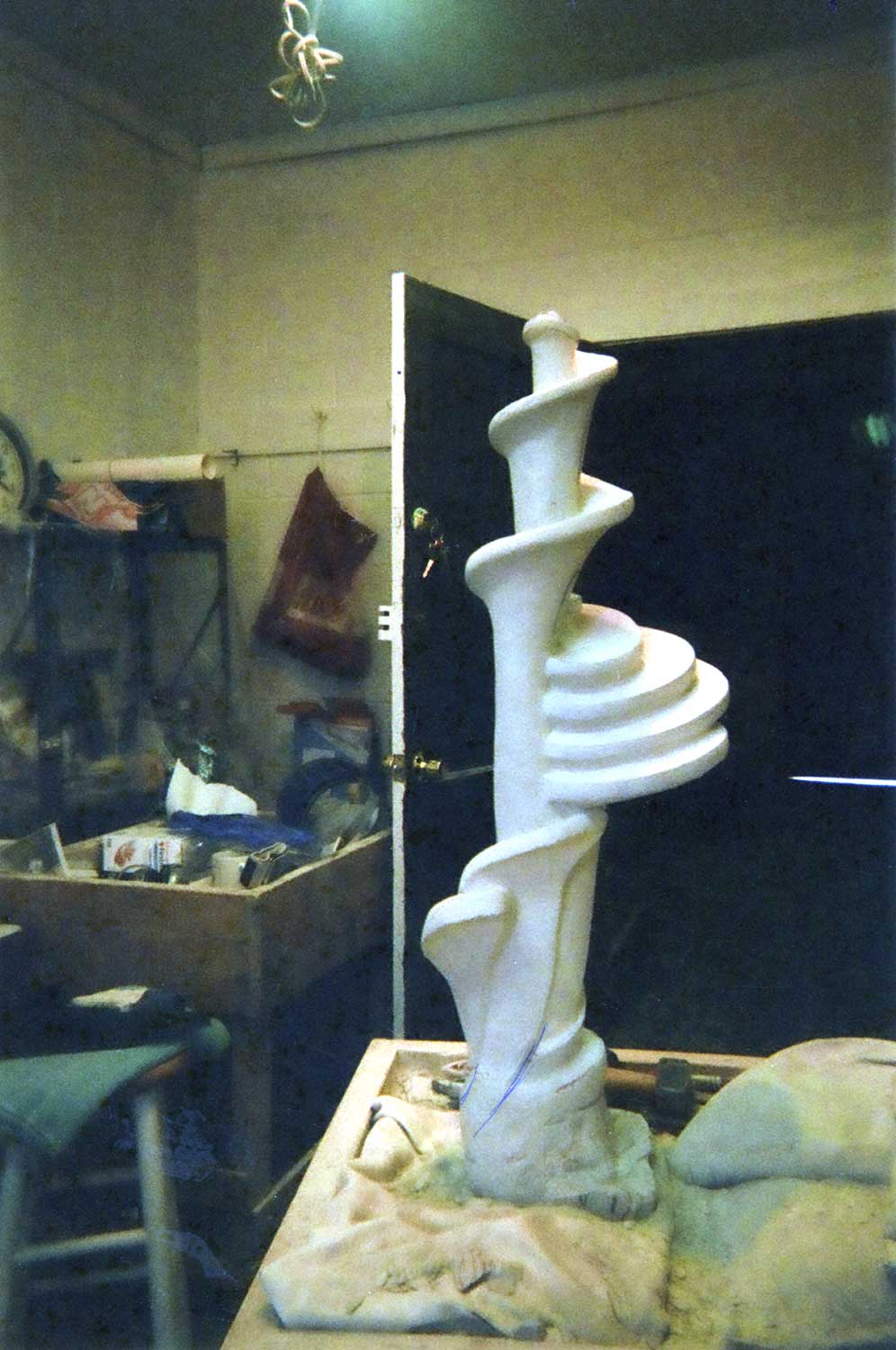
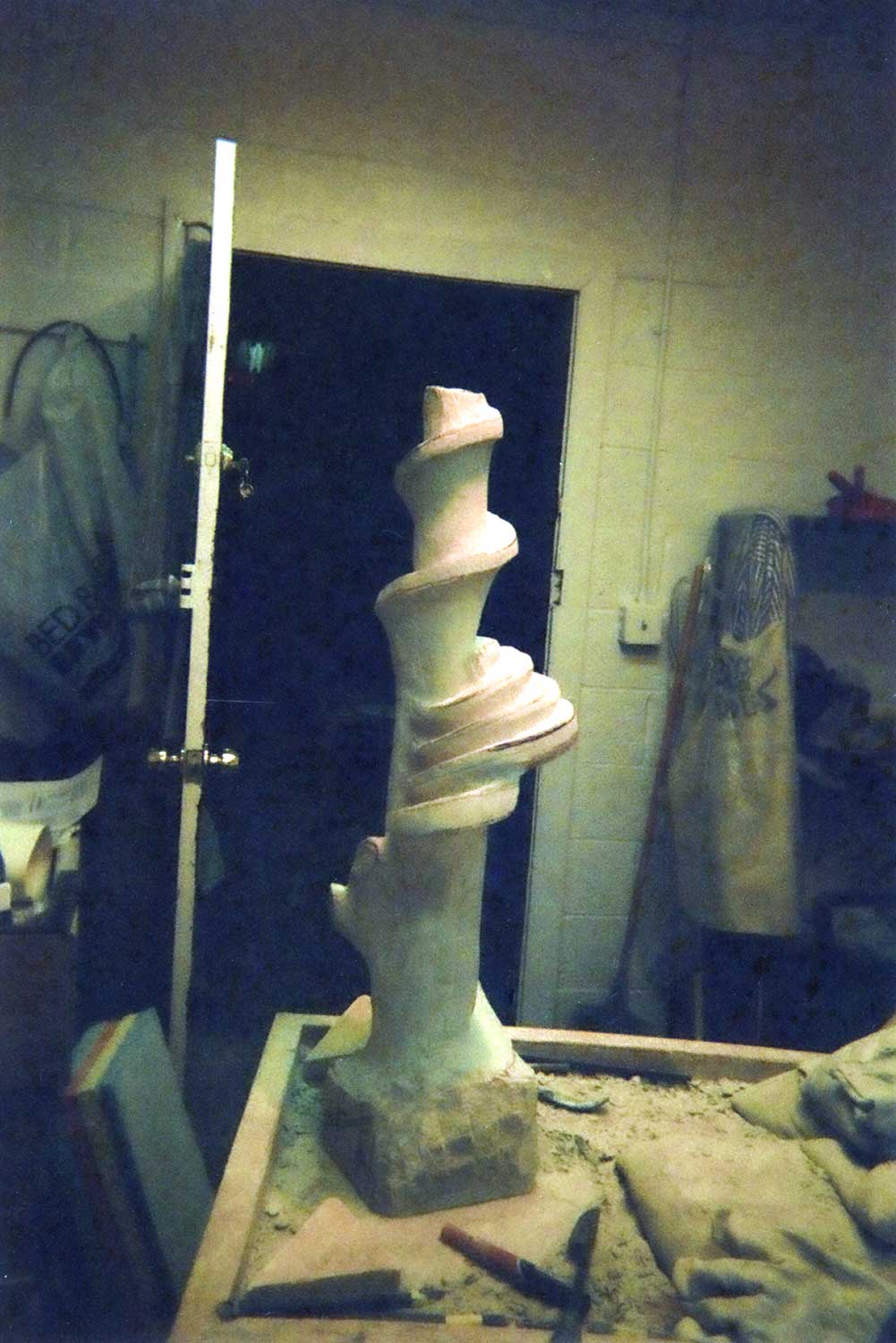

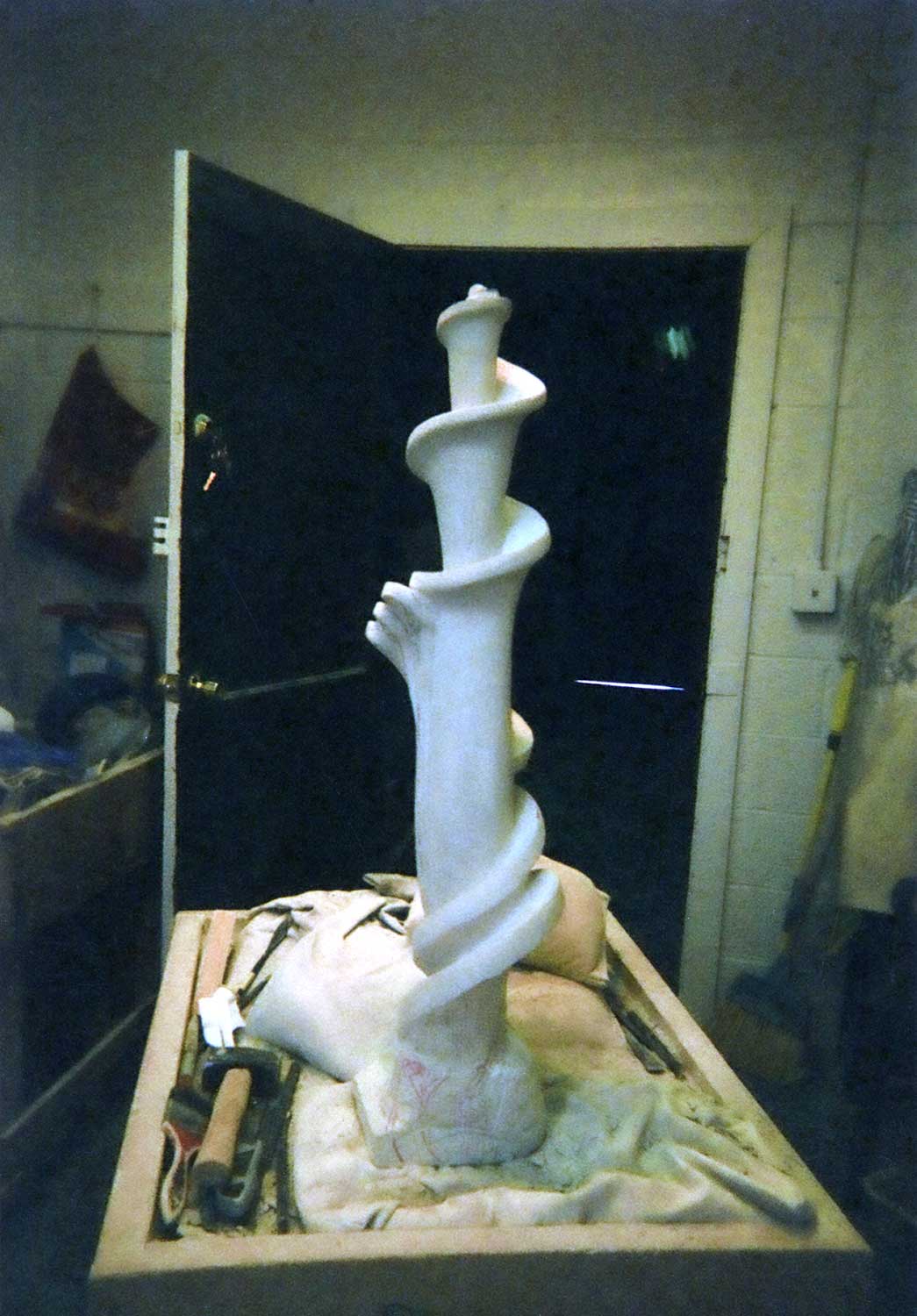

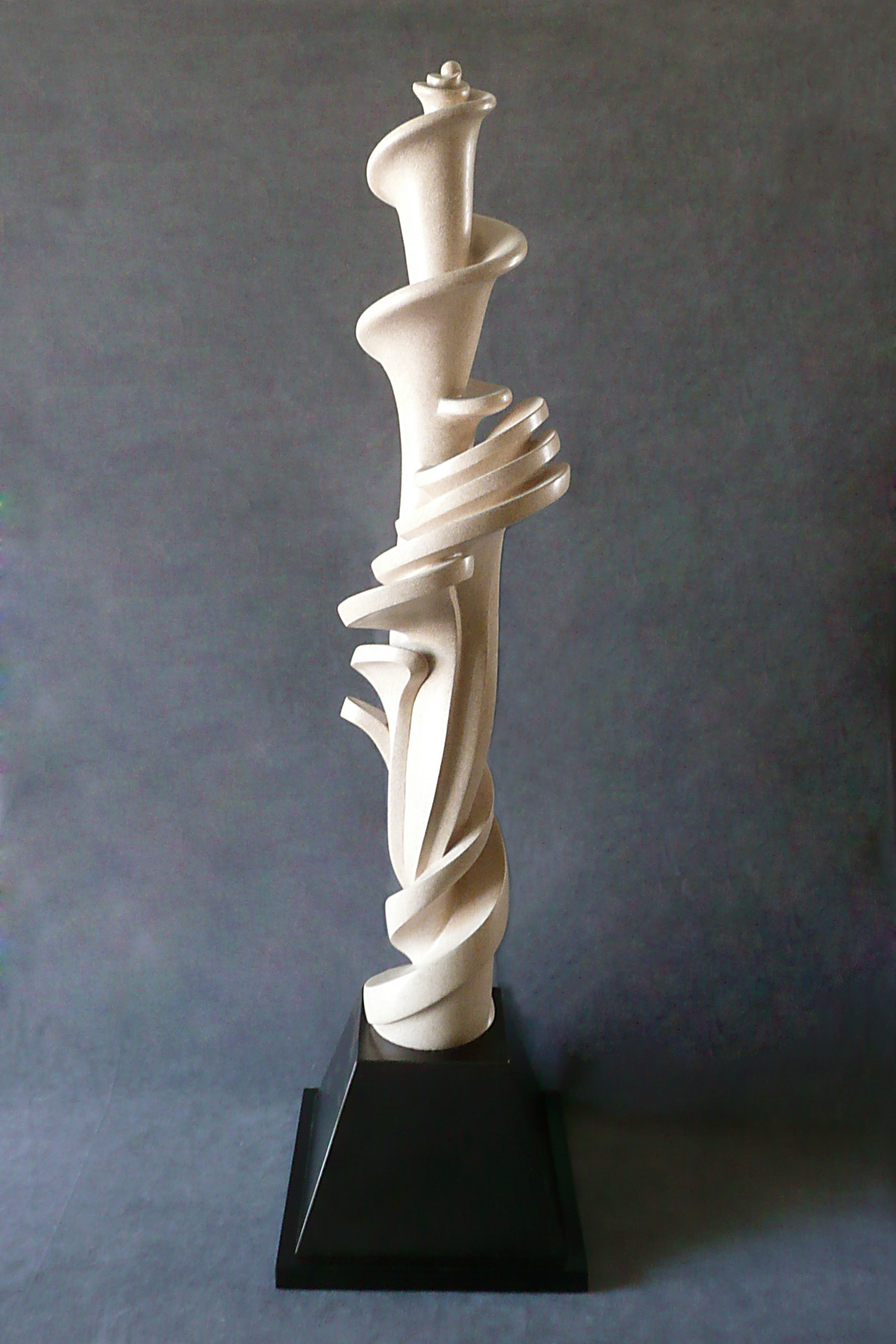
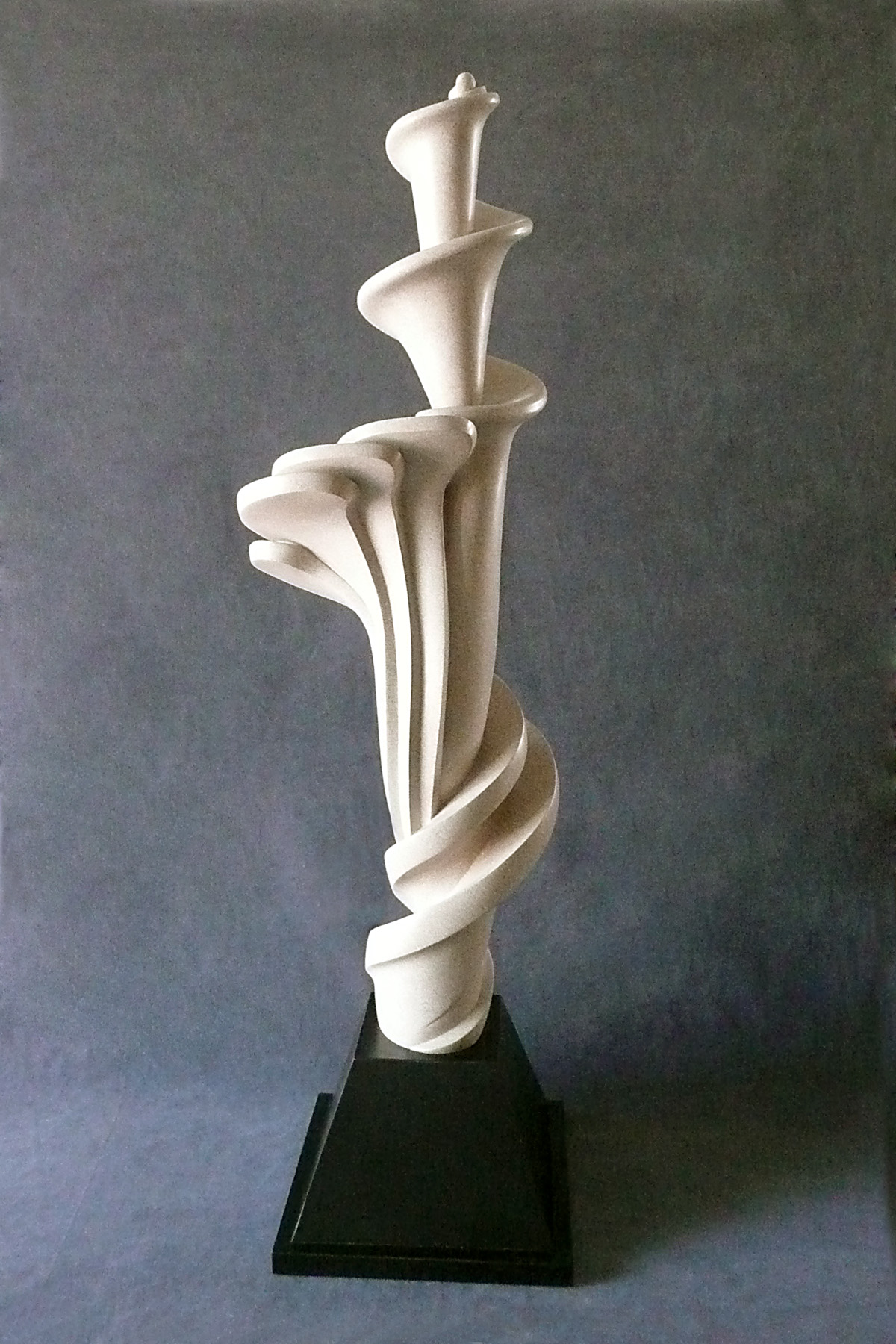
Every sculpture begins as a cold, inanimate hunk of solid material---it can be stone, wood, clay or metal. It can be just about anything. Whatever the medium, the goal of the artist is to add or remove as much of the medium as necessary to create the final work of art.
Some sculptors maintain a theory of sculpture that lets a new block of stone or wood dictate what the finished piece looks like. My creative process starts with finding something in nature (e.g., a seashell, a leaf, water, ferns, etc.) whose shape or texture appeals to me and that I feel I can use as a guide to start my sculpting process.
Sometimes I need to make a "maquette" which is a small clay model. This allows me to shape and re-shape the form before I begin cutting and grinding the stone itself, which is a very unforgiving medium. Once a piece of stone is reduced by the carving process, it is gone forever. Very often the final piece of abstract art I create looks nothing like what inspired it or the original maquette.
The inspiration for the above sculpture, Lily, was actually the center of a seashell I found at the beach. In this instance, the shell was my maquette. I used it as the model and carved the negative space away from the stone, leaving the positive shape of the shell in the middle. As you move from the photo of the final sculpture above (which started out as a 90 lb. piece of limestone and ended up at 35 lbs.) to the next picture, you will see the initial carving and removal of large chunks of limestone. To do this, I use an electric saw and a compressor-powered chisel. In the next picture, the pencil lines show where I needed to remove more stone.
Picture 4 shows a three quarter view of the work which is marked up to show where I had to cut away more stone to begin shaping it. There is also a blue clay maquette on the work table which I made to help me visualize more details for the final piece than were part of the original seashell.
In the 5th and 6th photos the rough stone is beginning to take a more graceful shape and flow. Photos 7-10 show where I began to use hand tools---hammer and chisels--- to carve and shape finer details while still removing pieces of stone. Pictures 11-12 show where I began pulling the vertical lines downward in the back of the piece to give it more visual interest. Pictures 13-15 show when I began using assorted steel rasps, wood carving tools and mallets, diamond rasps and dremels to reach the more inaccessible areas, to cut deeper into the stone and further define the desired shapes.
When the carving is completed to my satisfaction, I have the piece professionally polished and mounted. Except for the smallest ones, they are attached to a lazy-susan base that enables a viewer to turn the sculpture to see all sides without touching the stone. Some of my largest sculptures come with individualized pedestals.
The final three pictures show the completed Lily from different perspectives.